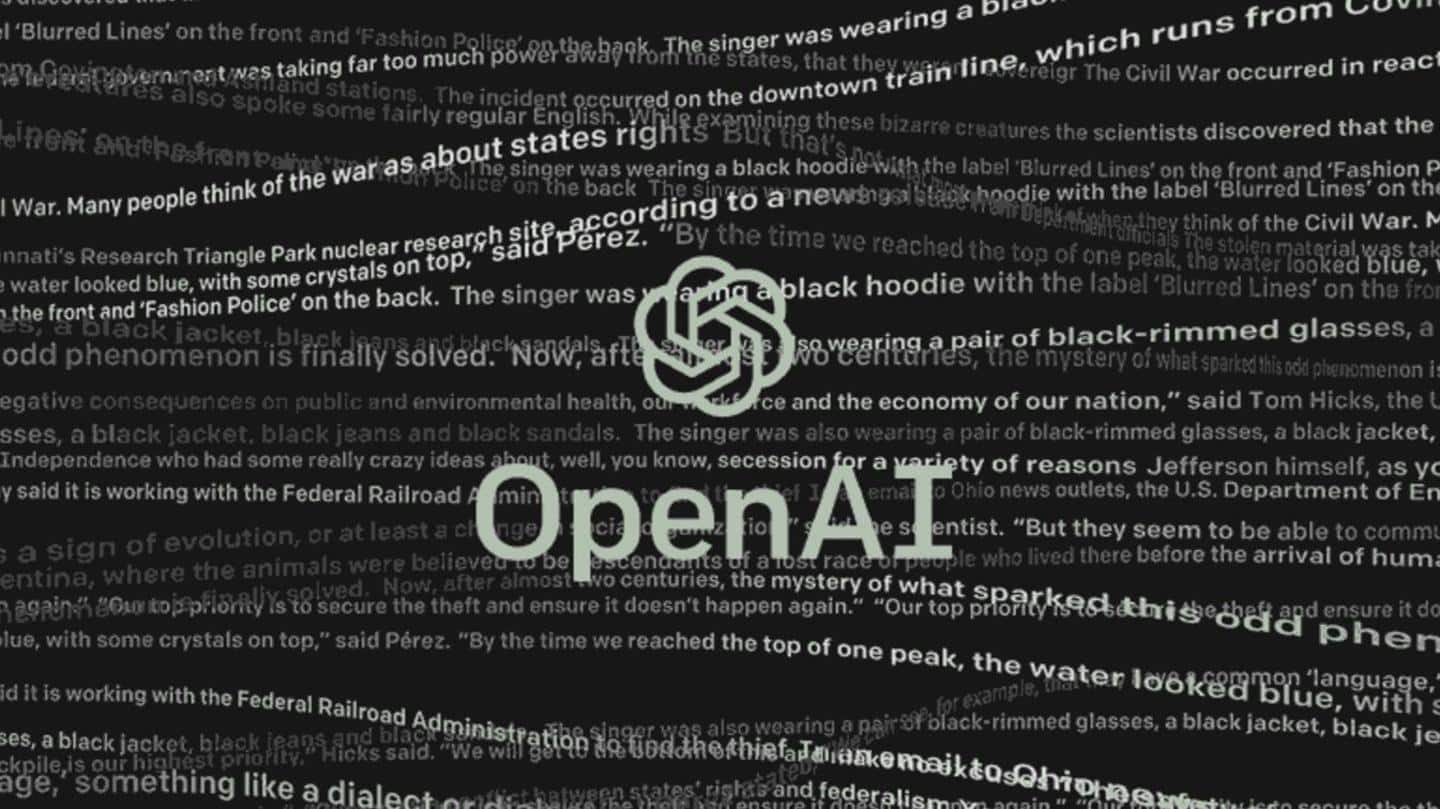
#NewsBytesExplainer: GPT-3, the powerful AI that generates stories, poems, code
What's the story
Back in May, OpenAI, the AI start-up co-founded by Elon Musk, had announced an advanced language processing algorithm called 'GPT-3'. The artificial intelligence model was released to select users last week and has since been making headlines owing to its mind-boggling text-generating capabilities. Now, the question is - what makes GPT-3 so special and can it really produce useful content? Let's find out.
GPT
First, some background of the GPT model
Generative pre-training transformer or GPT is an AI-based language model that uses a generative adversarial network (GAN) framework, involving a set of neural networks competing against each other, to produce text from a given excerpt. The model was announced in 2018 and upgraded to GPT-2 a year later. That system was more sophisticated at predicting words and writing full paragraphs of content.
Risk
GPT-2's code was restricted over concerns of fake news
GPT-2 was so quick and effective at generating texts that the team at OpenAI was worried that it may be used to spread fake news and hoaxes. So, instead of releasing the full code of the AI model, they launched a watered-down version of the algorithm to the public, allowing it to create self-rewriting text games, among other things.
GPT-3
Now, GPT-3, the most powerful text generator, is here
Now, building on the work done, OpenAI has released GPT-3 to select users through an API. The new model beats its predecessor and is the most powerful language model ever built. You just input text, and it uses it to capture a certain pattern and write an entire article or poem, depending on how the API is configured, in the same way.
Training
What GPT-3 is capable of doing?
In the few days since GPT-3's release, a number of samples of text generated by the AI model have started circulating on the internet. If appropriately configured by a human, the model can generate some really good stuff, starting from creative fiction and handy business memos to a working JavaScript code and even news stories.
Twitter Post
Here's an example of GPT-3's prowess
Omfg, ok so I fed GPT3 the first half of my
— delian (@zebulgar) July 17, 2020
"How to run an Effective Board Meeting" (first screenshot)
AND IT FUCKIN WROTE UP A 3-STEP PROCESS ON HOW TO RECRUIT BOARD MEMBERS THAT I SHOULD HONESTLY NOW PUT INTO MY DAMN ESSAY (second/third screenshot)
IM LOSING MY MIND pic.twitter.com/BE3GUEVlfi
Working
How the AI model works so effectively?
GPT-3 achieves these mind-blowing results using the trove of data fed into it. The algorithm has been trained effectively on all of the text available on the internet or some 500 billion words (GPT-2 was trained on 40 billion). Through this ginormous dataset, it identifies certain linguistic patterns humans cannot see and uses them to predict what should be added to a given text.
Repetition
Then, it repeats this pattern
Once it generates an output for a given text, it can combine both the generated and original content and treat it as input to produce the next batch of text. This way, based on all published content, it can continue and generate long articles, poems, or news stories, complete with punctuation as well as the context.
Caveats
But, there are some caveats too
While GPT-3 makes for a powerful text generator, it comes with certain caveats one should know about. First, it must be noted that the text generator uses fed data patterns to generate a word-by-word output, but it does not have its own understanding of the text given in or given out. It cannot grasp the meaning of input and reason like humans.
Information
Kevin Lacker demonstrated how the GPT-3 could be stumped
In a blog post, former Parse co-founder Kevin Lacker shared a Q&A session with GPT-3 to show that the AI could answer general trivia questions that are available on the internet and, presumably, included in its training data but fails to reject basic nonsensical queries.
Coherence
Coherence can also be a problem
Along with reasoning, the AI language model can also struggle with the problem of coherence. Specifically, unlike humans who can continue to write with the same narrative and tone, GPT-3 can go off-track. It generates words and phrases using the surrounding input and, therefore, might fail to maintain a consistent narrative or meaning in long passages. The sentences can even contradict each other.
Twitter Post
OpenAI CEO Sam Altman also acknowledged GPT-3's problems
The GPT-3 hype is way too much. It’s impressive (thanks for the nice compliments!) but it still has serious weaknesses and sometimes makes very silly mistakes. AI is going to change the world, but GPT-3 is just a very early glimpse. We have a lot still to figure out.
— Sam Altman (@sama) July 19, 2020
Possibilities
Still, a tool of this kind is no minor feat
Despite the downsides, a text generation tool of this kind can be used for various applications by entrepreneurs and developers. It can lead us to a future where text generation is automated in most, if not all, of the cases. But, do not worry (about your job) just yet, as the ability to create original and truly meaningful text appears to be far away.